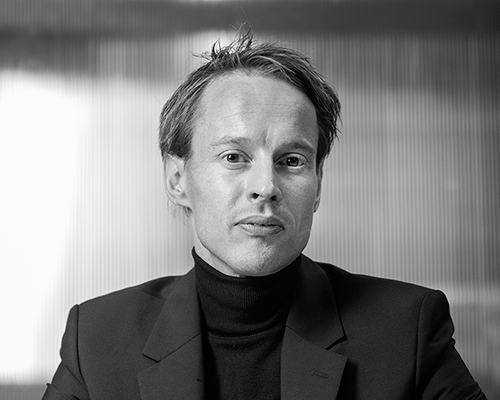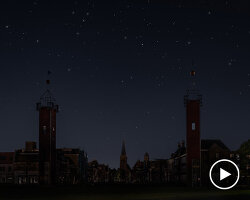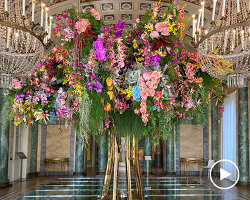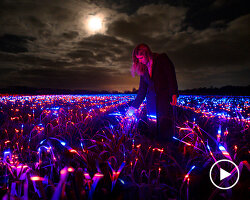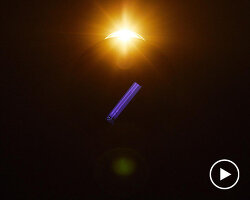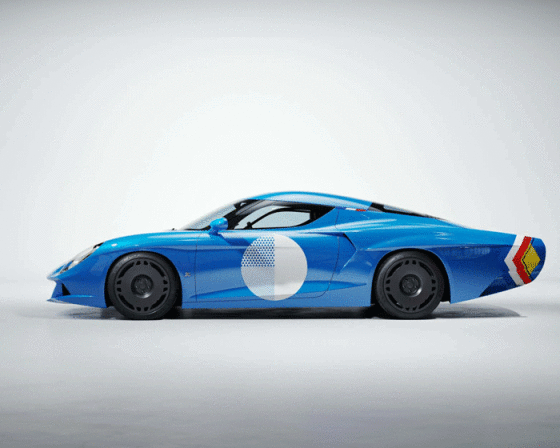saving cities one breath at a time, an interview with daan roosegaarde
image courtesy of studio roosegaarde
rotterdam is both controversial and level headed at the same time, however it is still tricky to capture the dutch city as it is constantly changing. this is why daan roosegaarde calls it his home. he was actually born in niewkoop, netherlands – a two hour bike ride from rotterdam, on july 24, 1979. he studied at the arnhem institute for the arts, followed by the academy of fine arts in enschede and finally finishing at the berlage institute. since then, he’s setup studios in both rotterdam and shanghai, where his teams have mastered lighting technology with projects like the waterlicht, the glow-in-the-dark smart highway and his most renowned undertaking, the van gogh bike path.
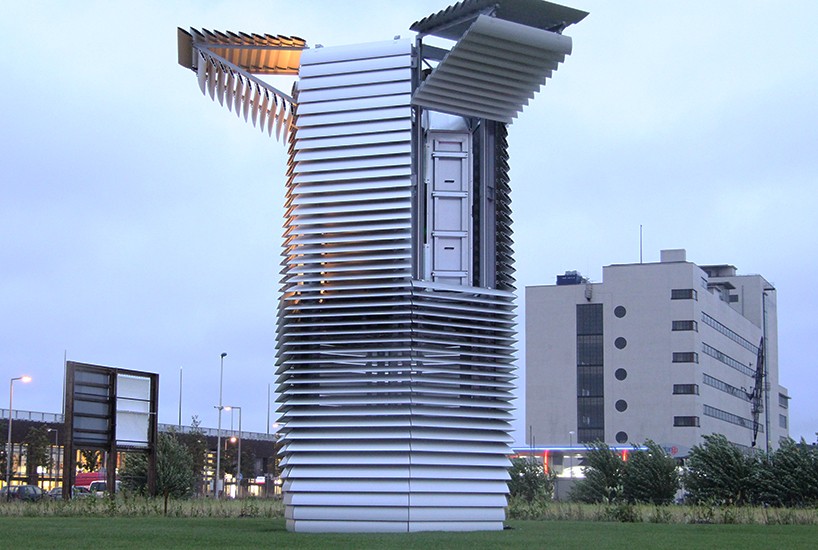
the ‘smog free tower’ on the day of it’s launch
image © designboom
but it’s not surprising the country has given birth to an imaginative and radical creator like daan roosegaarde. the netherlands sues its own government for not fighting climate change and is fueled by the great potential of the future. this is why designboom traveled to rotterdam – to talk to roosegaarde on the occasion of his studio’s single biggest endeavor, the ‘smog free tower’, a structure envisioned to tidy up the air pollution that is slowly killing every major city in the world.
designboom: congratulations on successfully funding the smog free tower on kickstarter. tell us what started the project?
daan roosegaarde: one day I awoke in beijing and became inspired by smog. this may sound peculiar, but it was something that inspired me because on the one hand I love technology, I love progress, I love thinking of the future. but, looking from my room in beijing on saturday, I could see the city — the trees and the people and the roads — but then on wednesday and thursday, it was completely covered with smog and air pollution. I was very sad to see that. to know that people will live two years shorter, children will have lung cancer when they’re eight years old and things like that. but on the other hand, maybe I can use this to design. if van gogh has his paint, maybe I have my smog particles. that was sort of the beginning of the project. I think a project like this, which is about technological innovation but also social innovation, in the beginning is very ungrateful, and this was particular with this project. I mean, we’ve done a lot like, light emitting bicycle paths, dance floors that produce electricity, landscapes which react to your sounds and your motions, but here, it really was in beginning that a lot of people were like ‘no, you can’t do it, it’s not allowed, it already exists, etc etc’. but I’m very happy in the year, year and a half now that we worked on it. we are now in the phase that people say, ‘oh this is really good, why did you not do this before?’ so we had to turn a lot, and that was a challenge, but it’s here now.
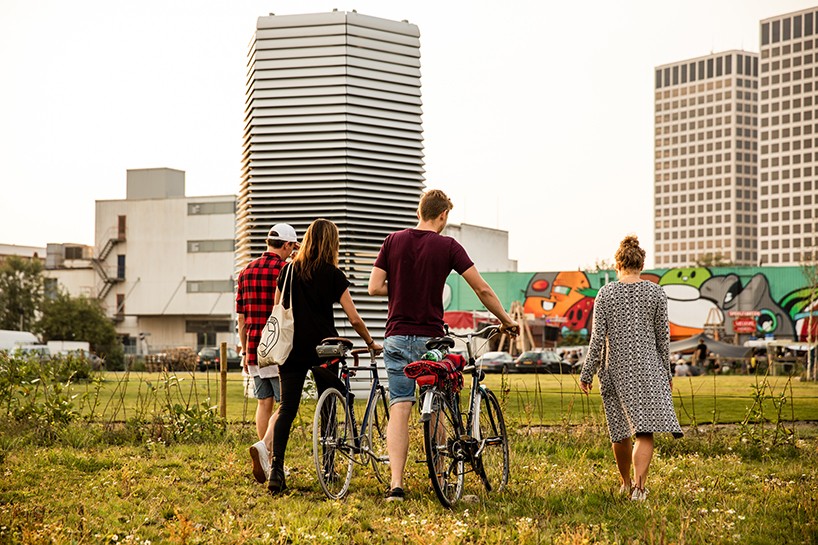
the ‘smog free tower’ in rotterdam
image courtesy of studio roosegaarde
DB: when we saw the project at first, we were like, ‘oh, there’s daan saving us from ourselves’.
DR: well, in a way we are. we have to enlighten ourselves for sure, and use not just technology, but also creative thinking to make cities more livable again. with smog, it’s such a sensitive topic in a political sense because every city has the problem, not just beijing, also rotterdam, where we are right now in the netherlands. no body really knows how to get to the final answer, and waiting for just the government is boring! so I’m a designer, I’m a maker, I’m an inventor. so lets use the team skills and my skills to build bridges towards a clean future.
DB: where was the first line drawn, where did you first approach the project?
DR: well we started to do some smaller prototype testing in beijing. harvesting the smog; sucking it up from the sky and cleaning it. looking at what was sort of captured, the smog particles. that was sort of incredible disgusting to look at. looking at it, and knowing that it was in our lungs right now was insane. even in the netherlands and europe, living next to a highway is the same as smoking 17 cigarettes per day. like fuck, that’s amazing. why do we accept that? so that’s also the notion that we say: one, we want to create a place of the future where people can smell the future and feel it, and two: it shouldn’t just be some sort of technological bla bla bla thing, because then people will just continue with their lives as they do. we have to create an engagement. so the notion of the smog free rings, compressing the smog particles and making it something that you would give your new wife or new husband to, which is happening right now. starting a crowd funding campaign to make sure that not one company or city would claim the project, but that it would sort of be distributed among the crowd was very important. it’s been a journey. we’re at the end of chapter one right now.
DB: did you right away want to start a kickstarter campaign, or were you reluctant to it?
DR: umm…. it’s a lot of work. so for a young design firm, it was a very important decision to say ‘ok’, we’re going to do this, wether I have to rob old ladies on a sunday night, because people were hesitant at the very beginning. we financed the research, development and first designs ourselves as a design firm. we have commission projects but I also think it’s very important to self commission, cut and pasting the successes that we’ve already done is boring. I think in the longer term, as an entrepreneur, later on we want to engage with the city, so rotterdam plugged in, and a crowd was important to give it the final push.
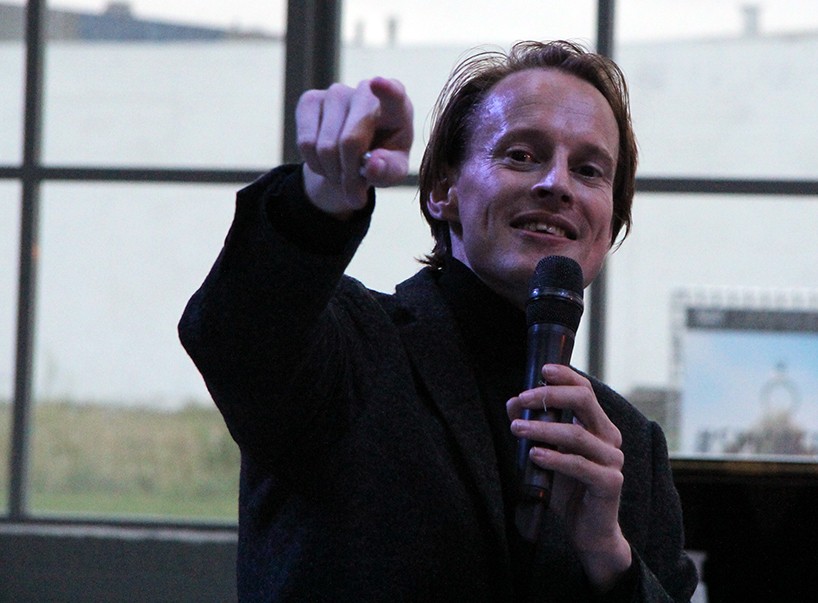
roosegaarde presenting the tower at the studio
image © designboom
DB: how did you first pitch this idea to the team? were you angry, coming back from the trip from asia?
DR: i was just incredible sad. especially when you do some homework and realize that every city has this problem. a lot of people are aware of it, but they feel passive, they don’t feel enabled to be part of the solution, they’re just part of the problem.
DB: they’re probably thinking, ‘oh, it could be worse.’
DR: or thinking, ‘oh ya, we all die sometime.’ we don’t care that two years of our life are being taken away. how I work, is I make sketches and short stories in the airplane back home, where I spent a lot of time. then I put it on the table, and they (the team) were a bit hesitant, but I’m like, this is it. I’m not sure what this is yet, but it has to be finished in four months, and then we get to work. so that’s how it starts.
DB: assuming that china was the worse?
DR: we have a second studio in shanghai, where the design firm is already sort of connected with that. it is a country which is in huge development, and is very easy to judge, but most of the products we use come from their. as marshall mcluhan once famously said ‘at spacecraft earth, there are no passengers, we are all the crew.’ so we’re connected to it, wether we like it or not. I don’t judge, and I just come up with proposals. to start in beijing, and to meet with the mayor, to address the issue, and make the statement their, then it becomes a gate way to other chinese cities. it is also a political statement, and that makes it interesting.
DB: you didn’t have to convince china very much did you?
DR: every project has it’s hesitations. I can remember a vivid story, that in the beginning we had some meetings with representatives of beijing. they just launched $750 million program on the war on smog, which they have started three and an half years ago. but a lot of it is based on replacing factories to less inhabitant places or promote cycling, but everyone adores the car. so we finally got the meeting scheduled with these people who had the key, so to speak. they walked inside, and looked me from a distance with a quick scan from top to bottom and asked one question. not how much, which I thought they would ask. not when is it finished, but where is your boss? and I’m like, ‘I am the boss’. of course in an hierarchy system, it’s insane that a 36 year old guy comes up with these kind of things, in their imagination. I think it’s very normal. I think the new generation has this power and is doing it in better ways than one can imagine. anyways, shitty meeting, we went home and did not give up. we came back with our minister of science and education jet bussemaker, our dutch minister. she went along and said this is any important person, we checked him, blah blah blah.
DB: as a parent?
DR: no, not as a parent but as someone, in their world, they think has authority. so I’m naive. I always think an idea will convince people, but some systems work differently. so why I am telling this, because you have to be creative as a designer, but sometimes you have to push. there are always different ways to how make something happen. in that way, it was a challenge. I enjoyed it, and now they want to do it. it’s important. the olympics are coming. but if they wait too long, we’ll just go to india or paris or LA. I’m not going to wait.
DB: do you think they’ll want more of these towers?
DR: absolutely. I think my next step would be to do 10, 15 of them in places in the city where the children can play outside when smog pollution is too high, because they now have to stay inside. we have a generation between 8 to 12 years old, which grow up behind a computer screen. they grow up thinking everything has a bloody download button, which is sort of insane. we always focus on public spaces, which are for everyone, you don’t have to buy a ticket. I mean, we got the private investors, the capital investors very excited, that if we do this for the happy few, the rent will go up for the gated community. but I believe you should say ‘no’ many times to create a good ‘yes’. it is always something we can do later, but the first one has to be a collective. super important. that is the beauty of a designer, that you can say ‘no’ or ‘not now’ and realizing that it is as important as, the type of material you use, the detail, the technology, the refinement. I think you should be aware because you can empower yourself that way. that is very important.
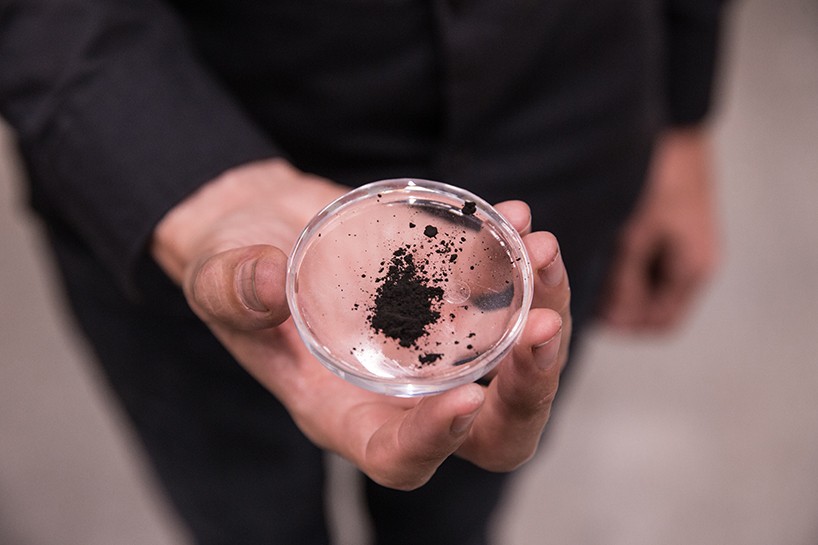
the smog particles collected by the tower
image courtesy of studio roosegaarde
DB: did the idea of having a failed kickstarter campaign keep you up at night?
DR: oh no. no. no. I could feel the enthusiasm. plan b was robbing old ladies on a sunday evening. we would’ve managed the goal anyway.
DB: what was the most difficult part of this project?
DR: I think it’s such a big topic, such a sensitive topic, so everybody wants to act, but at the same time scared that if they participate people will blame them being the cause. you have this weird limbo situation, and so what we did, is we pushed it ourselves. we spent our own time, money and energy. now that it’s here, mayors from kazakhstan, paris, mumbai, san paolo showed up. now it’s being tactile and realized, matured and sharable. in the beginning, an idea is fragile. it needs to be cherished, and you need to have leaders who have the guts to invest in new ideas out of love for the future. out of shear desperation for the future. I really don’t care, to be honest. it was difficult to create a connection. in the end for me, it’s about true beauty. when you look at the van gogh bicycle path that we did, people look at it, and everyone loves it. we’re building them in different versions all around the world. but it’s sort of easy to like it. but this for me, this smog free project has a higher level of beauty because it’s about sharing clean air. it’s about working together to improve life. not design another bloody chair, or lamp, or table. that’s not design anymore for me. it’s about updating reality. that’s incredible fascinating to be pioneering in to that.
DB: but daan, you won’t see the results in your lifetime. society wants results very quickly.
DR: this is quick result, you have a local solution, a park which is 75% more clean than the rest of the city. that is very direct, right now, return on investment, or whatever you call it in the hard capital world. I’m soft capital world. but in long run, is that you create a smog free movement. people will work together, scientists, artists, designers, NGOs, government, to say ok what do we need to make the whole city smog free. there will be a time, when my grand children will ask me, what did you do when you were young? I’ll answer: made roads that emit lights at night, and charge in the day time. I made places that are smog free. I hope they will sort of, frown and shake their heads, saying that it already exists all the time, everywhere. why did you spend so much time on that? it’s already the new default. so it’s ok that I won’t be apart of that.
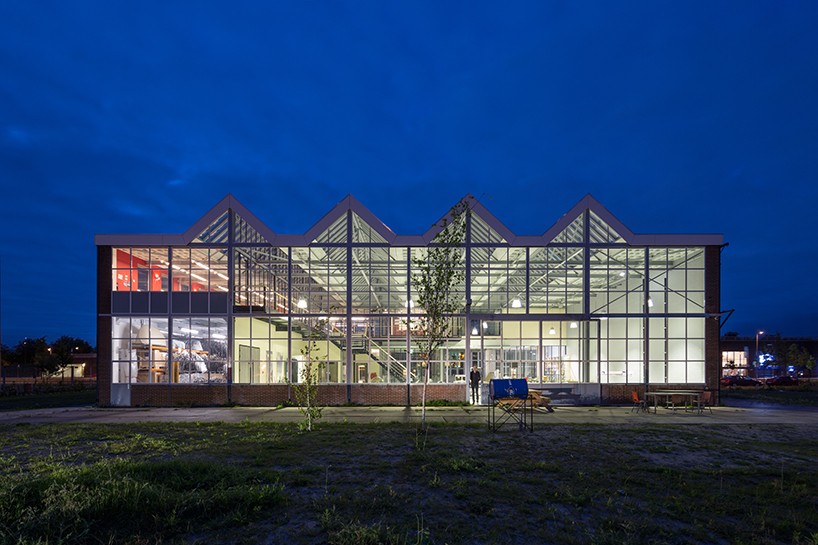
studio roosegaarde was once an abandoned warehouse
image courtesy of studio roosegaarde
DB: this is a piece of a bigger puzzle, right?
DR: absolutely. there are no easy answers in the new world. the old world is crashing, in terms of economy, in terms of energy and at the same time, the new world is sort of unknown. we’re sort of prototyping the new world. we’re also a bit scared of it. will robots take our jobs? are you plugged into the cloud? what does authenticity mean? what does craftsmanship mean? I think that’s the role of the designer. to say, this is our playground. there are so many questions, no body has ideas in the big industries or there’s a big desire for new ideas, lets put it like that. it’s a new playground. I think the role of the designer is to make radical statements about the future of mobility, the future of energy, the future of health, the future of beauty and poetry. you see that shift coming up. I would encourage designers to be curious towards that, because it’s a new playground where you can shape what you want to do or don’t want to do.
DB: why don’t you run for mayor then?
DR: no, I’m a maker. I love making things. the fact that you have this idea, a taste in your mouth, but you don’t know the ingredients are yet. so you start to read, and write, and make mistakes. then prototype and upgrade, and suddenly it’s there. you then give it back to the audience. people can share it. react to it, and it’s for everyone. but right now, it’s still just for me. it’s still me baby. I like that. with all due respect to the great mayors this world has, I would miss the tactile and material aspect. I like to be a happy infiltrator. give me a system, look at it. I question. why do we shut down street lights at night? why do we accept pollution? and then sort of make my own obsession, my own personal interpretation of how I think it should be different. if you disagree, that’s fine with me, but I don’t care about opinions. I care about proposals. I believe people living in a city, should not be taxpayers, but feel like citizens. should not feel like a consumer, but as a maker. this is one of the most important shifts we are in right now. enlarged my new technologies, but most importantly a new mentality. it’s exciting to be a part of that.
daan continues in the video.
daan discusses the ‘smog free tower’ and the urban landscape of the future
video © designboom
happening this week! pedrali returns to orgatec 2024 in cologne, presenting versatile and flexible furnishing solutions designed for modern workplaces.
studio roosegaarde (34)
PRODUCT LIBRARY
a diverse digital database that acts as a valuable guide in gaining insight and information about a product directly from the manufacturer, and serves as a rich reference point in developing a project or scheme.
